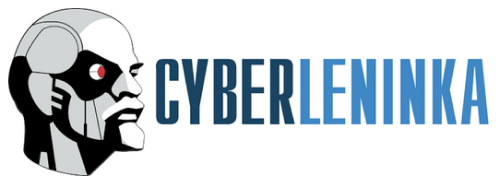The construction of nation-state in China in the 20th century
( Pp. 29-34)
More about authors
Tao Jinghong
post-graduate student
Ural Federal University named after the first President of Russia B. N. Yeltsin
Yekaterinburg, Russian Federation Kuzmin Vadim A. doktor istoricheskih nauk, professor, professor kafedry vostokovedeniya
Ural Federal University
Yekaterinburg, Russian Federation
Ural Federal University named after the first President of Russia B. N. Yeltsin
Yekaterinburg, Russian Federation Kuzmin Vadim A. doktor istoricheskih nauk, professor, professor kafedry vostokovedeniya
Ural Federal University
Yekaterinburg, Russian Federation
Abstract:
At the transition of the new century and the old, China faced the gunboat diplomacy of Western powers. The traditional Chinese «Tianxia» (天下) order was destroyed and disintegrated. China began to realize the existence of an international political order composed of nation states. In the face of imperialism devouring the land of China, Chinese intellectuals realized that the reason why China was invaded is because China had not completed its modernization, and political modernization was the establishment of a nation-state system to participate in the fierce national competition in modern times. Only the establishment of a nation-state could maintain China’s independence and territorial integrity. In this context, Liang Qichao, as a representative of constitutional monarchy, proposed the notion of «the Chinese Nation» (中华民族), with the effort to unite all ethnic groups in China against imperialist aggression and save Qing Dynasty from peril. Sun Yatsen put forward the idea of «Five Races Under One Union» (五族共和), and under this calling, the political forces of the North and South reached a consensus and finally a multi-ethnic bourgeois republic of China was established in 1912. Fei Xiaotong’s concept of «The Pattern of the Chinese Nation's Pluralistic Unity» (中华民族多元一体格局) was proposed after the founding of the People’s Republic of China, emphasized national diversity, unity and equality. This article takes these three political activists’ national theories as analysis objects to sort out the process of how China transitioned from the old empire into a modern nation-state. Through this analysis, I hope to understand the emergence and nature of modern China as an independent subject in international relations.
How to Cite:
Tao J.., Kuzmin V.A., (2020), THE CONSTRUCTION OF NATION-STATE IN CHINA IN THE 20TH CENTURY. History and Modern Perspectives, 3 => 29-34.
Reference list:
AHDERSON B. Imagined Communities: Reflections on the Origin and Spread of Nationalism. London: Verso, 2006.
SMITH A. D. Nationalism. Cambridge: Polity Press, 2010.
STALIN J. Marxism and the National Question. London: Croom Helm, 1973.
. 10 : 2005 . Liang Qichao. Yinbingshi Collection, collected works 10 On the General Trend of National Competition // Beijing: Zhonghua Book Company, 2005.
. 13 : 2005 . Liang Qichao. Yinbingshi Collection, collected works 13 The Doctrine of the Political Science Master Bluntchli // Beijing: Zhonghua Book Company, 2005.
. 42 : 2005 . Liang Qichao. Yinbingshi Collection, Special Collection 42 National Studies in Chinese History // Beijing: Zhonghua Book Company, 2005
. - : 1981 . Sun Yatsen. The Selected Works of Sun Yatsen // Beijing: People s Publishing House, 1981.
. 5 1985 . Sun Yatsen. The Complete Works of Sun Yatsen, Volume 5 // Beijing: People s Publishing House. 1985.
. 2 1985 . Sun Yatsen. The Complete Works of Sun Yatsen, Volume2 // Beijing: People s Publishing House, 1982.
. 1989 4 . Fei Xiaotong. The Diversified Unity of the Chinese Nation // Journal of Peking University, No. 4, 1989.
. 1999 . Fei Xiaotong. The Diversified Unity of the Chinese Nation // Beijing: Central University for Nationalities Press, 1999.
SMITH A. D. Nationalism. Cambridge: Polity Press, 2010.
STALIN J. Marxism and the National Question. London: Croom Helm, 1973.
. 10 : 2005 . Liang Qichao. Yinbingshi Collection, collected works 10 On the General Trend of National Competition // Beijing: Zhonghua Book Company, 2005.
. 13 : 2005 . Liang Qichao. Yinbingshi Collection, collected works 13 The Doctrine of the Political Science Master Bluntchli // Beijing: Zhonghua Book Company, 2005.
. 42 : 2005 . Liang Qichao. Yinbingshi Collection, Special Collection 42 National Studies in Chinese History // Beijing: Zhonghua Book Company, 2005
. - : 1981 . Sun Yatsen. The Selected Works of Sun Yatsen // Beijing: People s Publishing House, 1981.
. 5 1985 . Sun Yatsen. The Complete Works of Sun Yatsen, Volume 5 // Beijing: People s Publishing House. 1985.
. 2 1985 . Sun Yatsen. The Complete Works of Sun Yatsen, Volume2 // Beijing: People s Publishing House, 1982.
. 1989 4 . Fei Xiaotong. The Diversified Unity of the Chinese Nation // Journal of Peking University, No. 4, 1989.
. 1999 . Fei Xiaotong. The Diversified Unity of the Chinese Nation // Beijing: Central University for Nationalities Press, 1999.
Keywords:
China, nation-state, the Chinese Nation, Five Races Under One Union, pluralistic unity.
Related Articles

1. Political problems of international relations, global and regional development. FOREIGN SCIENTIFIC SCHOOLS Pages: 7-11 Issue №10327
The influence of the Cold War on modern trends in world politics from the point of view of Chinese and Russian scientists
the cold war
Russia
China
United States Of America
ideology
Show more
5.1.3. PRIVATE LAW (CIVIL) Pages: 195-207 Issue №21250
Practical Development and Legal Norms of Real Estate Investment Trust in China
China
China’s Trust Law
Real Estate Investment Trust
Asset Securitization
Trust Law of China
Show more
International Relations Pages: 144-151 DOI: 10.33693/2223-0092-2023-13-2-144-151 Issue №22898
China and Approaches to the Formation of the State Image
China
image
image of China
symbolism of China
“soft power” of China
Show more
International Relations Pages: 155-162 DOI: 10.33693/2223-0092-2023-13-1-155-162 Issue №22854
The Formation of China’s Diplomacy and its Features
China
cultural policy
Chinese diplomacy
concepts of Chinese diplomacy
Chinese foreign policy
Show more
International Relations Pages: 145-151 DOI: 10.33693/2223-0092-2023-13-3-145-151 Issue №23055
Issues of Building China’s Foreign Policy Through the Prism of “Soft Power” and Public Diplomacy
“soft power”
cultural policy
public diplomacy
public diplomacy
China
Show more
3. PRIVATE LAW (CIVIL) DISCIPLINES Pages: 142-150 Issue №19964
Modern Military Technologies and the Responsibility of a Scientist, Creator, Operator, etc.: Some Approaches of the BRICS Countries
BRICS countries
Russia
China
new military technologies
unmanned vehicles
Show more
2. DECISION MAKING AND PROJECT FINANCE OF HIGH-TECH INDUSTRIES Pages: 93-96 Issue №8496
INNOVATIVE ENTREPRENEURSHIP IN WEST AFRICA
economic growth
entrepreneurship
unemployment
innovation
China
Show more
6. WORLD ECONOMY Pages: 170-173 Issue №18204
Digital transformation for the business of the EAEU countries
B2B
B2C
B2G
Digital Transformation
Digital Ecosystems
Show more
SPECIALTY 12.00.03 Pages: 131-134 Issue №14694
DIGITAL LAW AS A NEW LEGAL PHENOMENON
Eurasian space
EU
European Union
e-commerce
cross-border e-commerce
Show more
5.1.3. PRIVATE LAW (CIVIL) Pages: 189-194 Issue №21250
Convergence of Russian and Chinese Laws on Foreign Investments
China
Russia
international law
foreign investment legislation
harmonization
Show more










